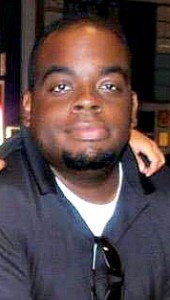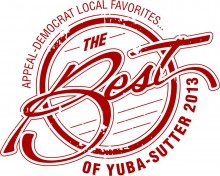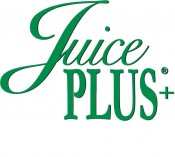by Dante Walters
Here at Fusion, September marks the start of our Yearly Curriculum and one of my favorite themes: Exploring the Universe! Each week this month the students of Fusion have embarked upon adventures based on science-fiction literary classics, rocketed around our solar system and into space beyond, and they have experienced the beauty of our cosmos in our very own planetarium. To give you an idea of how we tackle these concepts and themes here at Fusion, here is a sampling of our lessons this month.
THE BLUE ROOM
In our Blue Room this month, building up our student’s Listening & Speaking skills played an important role in the lessons we created. Fusion students were able to experience science-fiction classics such as “The Time Machine”, “The War of the Worlds” and “Journey to the Center of the Earth”. In order to better help them absorb the information of each tale, the students would retell that day’s selection as a group, each child taking a turn to add information or a fact from the story. This allowed each child the opportunity to express what he or she found interesting about the tale, helping to build their confidence, solidify their knowledge of each tale and (as was the case on several occasions ;)) take them off into a completely new direction! My personal favorite lesson this month came about while reading “The Time Machine” by H.G. Wells. We read our selection that day and then talked about the places we would or could go if we had a time machine of our own. As you would expect, many of the answers had that “child-like” quality to them; watching dinosaurs, getting ice cream and visiting a local water park. The children then plotted out what our time machine would need (like a seat, buttons and apple juice!). Each child then had the opportunity to use our time machine and lead us to the time or place of their choosing. The adventure that I believe we all enjoyed the most was to “a place that just has animals and trees and stuff”. At first I thought the child just wanted to be alone with nature or alone in general, but she quickly clarified that rather than be a person, she wanted to BE an animal or “stuff outside”. Unique from the other adventures where we used our imagination to observe, we instead became the things we wanted to see, leading to a completely different interaction activity. With other adventures, I was able to “steer the ship” through the use of open-ended questions. However, with this visit to The Land of Stuff, what began as a Teacher Directed activity evolved into a completely Child Directed interaction. One child became a tree so that the others had somewhere to “rest” or hide or climb. It was amazing to see and while it was not what I had in mind at the start of our day, it certainly became the best part of it!
THE RED ROOM
Space is beautiful. The twinkling stars, shimmering planets and the multi-colored hues of the cosmos are an awesome sight to see. In an effort to replicate a small portion of that, and to engage our student’s imagination, we turned our Red Room into a planetarium! We used pictures taken by our Artist of the Month (The Hubble Telescope) to introduce the universe in a way our students were unfamiliar with. We attempted to create the perspective of “standing” on the surface of Earth to gaze out into our solar system and space beyond. While many of our creations used mundane materials such as paint and glitter to create these celestial objects, the process of their creation and sense of wonder they create for our students is far, far more important than the product. We used the music of composer John Williams (Star Wars & E.T.) to help set the mood for our students as they stepped into the room each day. We wanted it to feel as if they were leaving Earth and heading off into space! At the start of each class, we reviewed what a planetarium is and its purpose, as well as the many wondrous things that can be seen out beyond Earth’s horizon. One of the simple, yet effective, projects we used in the Red Room and our other classrooms was to discuss and then create our own constellations. To this end, we used a device I possess that projects the constellations (as they are seen from Earth) onto the walls and ceiling. We explained that constellations are “pictures that we create in our minds with the stars”, and then we had our Fusion students use push-pins to create dozens of holes in black construction paper. Each child was then able to use a crayon or colored pencil to “connect the dots”, thus creating his or her own constellation. We then taped each piece of paper in place on our windows, creating a twinkling effect as you walk by! The Fusion students spent several minutes walking back and forth after we covered the windows, creating (as one child said) new “twinkles”.
THE GREEN ROOM
Without a doubt, the Green Room is my favorite place to teach during this theme! In our Red Room, we explore the beauty of our universe. In the Blue Room, we stretch our student’s imaginations with the stories we read. The Green Room, however, is where they really come to understand what all of this “space stuff” is! We began simply with discussions about the few things our Fusion students already were familiar with, i.e., we live on planet Earth, we have a moon and there are stars in the sky (but only at night according to a few; how quickly that thought changes!). We introduced them to Galileo Galilei, the man responsible for the invention of the telescope and the man considered to be the father of astronomy. Fusion students had the opportunity to learn about gravity; what it is, what it does and how it affects not only their world but all things in our solar system and beyond. We spent a week learning the geo-compositional differences between the interior “rocky” planets and that of the outer gas giants (on a simple level, of course). There were and are many great opportunities in this theme for education and exploration of the universe around us! One such lesson dealt with the fact that our “sun” is actually a yellow dwarf star (named Sol). This allowed us to delve into the fact that all stars are “suns” and they appear as small pinpricks of light due to the distance between them and Earth. This in turn led to discussing how far away stars are and that the closest star to us is still (nearly) 93 million miles away! We spent several lessons discussing the properties of the Sun and how important it is to life here on planet Earth. Perhaps my favorite lesson this month was an Activity Based lesson where we first discussed the fact that stars appear as many different colors due to their temperature (red, orange, yellow, green, blue and white...depending upon who you ask). The question then was, “What if our star was a different color?” To explore this, we first asked the students a few open-ended questions such as:
- “What would happen if our star was red or blue?”
- “How would the world around you look?”
- “How would you feel?”
And then we tried it out! We cut off all of the lights and made our room as dark as possible, then using a light source (my iPhone!) and several different colored discs, we took turns holding the different discs up to the light, plunging our room into a vast rainbow of color! A few children remarked that red made them feel hot, while another insisted she was freezing with a “blue sun”. We then turned the lights back on and allowed the children to hold the discs up to their own eyes and “see” the world in total red, blue, green and many other colors. After exploring the world in “rainbow vision”, we asked which color of star they would most like to have or live with on Earth and had them draw that out in their individual Fusion journals. This lesson took place several weeks ago and I still see Fusion students using the discs to look at their friends through “rainbow vision” or a “green sun” while playing and interacting with their friends.
Lessons like these and the experiences I have with the children as they grow and learn about these concepts is incredibly rewarding on a personal level. I am constantly amazed by the facts and information they remember! I leave you with a recent story from my own life away from Fusion:
My daughter and I had managed to make it home before the rest of our family, so we headed outside to our backyard. My daughter wanted some help on our swing set, so I obliged and pushed her for several minutes. We sang a few songs together, mostly from the “Frozen” soundtrack, and then she was ready to head back inside. She jumped off of the swing and I made to grab the seat to stop its momentum, and she turned to me and said,
“Don’t worry, daddy. Gravity will take care of it.”
 Dante Walters is the Director of Education for Fusion Early Learning Preschools & Curriculum as well as currently serving as the Director for one of our sites. He is an incredible teacher and mentor to his staff and students. Dante has been with us since 2007, changing the lives and molding the minds of young students at Fusion for the past 7 years. Dante is also quite the family man, with a beautiful wife and 3 amazing children who he adores. Want to get in touch with Dante? Send him an email at dante@fusionkids.com. He would love to hear from you about your own experiences at Fusion or suggestions for future blog posts!
Dante Walters is the Director of Education for Fusion Early Learning Preschools & Curriculum as well as currently serving as the Director for one of our sites. He is an incredible teacher and mentor to his staff and students. Dante has been with us since 2007, changing the lives and molding the minds of young students at Fusion for the past 7 years. Dante is also quite the family man, with a beautiful wife and 3 amazing children who he adores. Want to get in touch with Dante? Send him an email at dante@fusionkids.com. He would love to hear from you about your own experiences at Fusion or suggestions for future blog posts!




